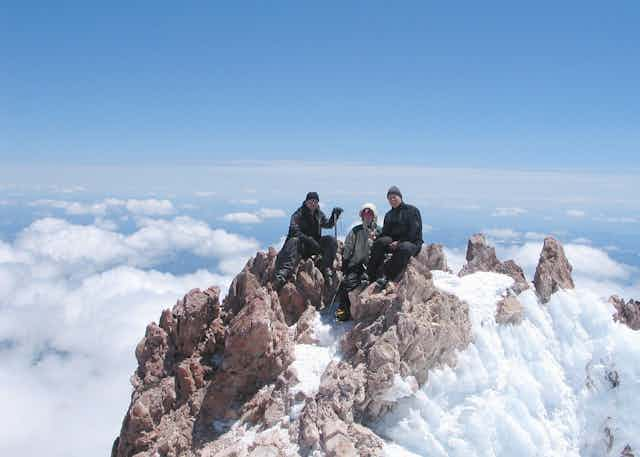A new study of the DNA of Tibetans has looked at the gene underlying their ability to live in the low-oxygen conditions at high altitudes. It found that this gene has come from an unexpected source – the mysterious group of ancient humans called the Denisovans. This work, a collaboration between Chinese, Danish and American scientists, has been published in the journal Nature.
In the 1990s, a consensus existed about the origin of our human species, Homo sapiens. Our species is young, evolving in Africa around 200,000 years ago, and spreading throughout the world, reaching Europe perhaps only 60,000 years ago.
But we are not the first species of the genus Homo to live in Europe. Fossils from 300,000 to 30,000 years ago reveal the Neanderthal people, Homo neanderthalensis. Many viewed the process where modern Europeans and Asians left Africa and supplanted the Neanderthals as a complete replacement, with no interbreeding. This is what the fossils seemed to say, and seemed confirmed when the sequence of one small part of the Neanderthals’ DNA – that found in the cell’s mitochondria, revealed the Neanderthals to be quite distinct from all modern humans.
More than just us
But, in 2010, studies refuted this simple picture. The Neanderthal genome project found that Modern Europeans and Asians, but not Africans, had somewhere between 1% and 4% of their DNA that came from the Neanderthals. There had been interbreeding between the groups after all.
But another surprise was looming. In a cave at Denisova in Siberia, fragmentary human sub-fossils, around 50,000 years old, yielded high-quality DNA, and from them the genome of the “Denisovans” was sequenced. And the Denisovans were almost as genetically different from Neanderthals as are modern humans. Suddenly, we had to get used to three distinct groups of humans 50,000 years ago. Did the Denisovans breed with modern humans? Apparently, yes, as a small proportion of modern New Guineans’ DNA showed strong similarity to Denisovan sequences.
While this ancient DNA was surprising to the scientific world, researchers were looking at modern human DNA to find evidence for recent adaptations arising by natural selection. For some studies the goal was to identify the genetic causes of the important biological differences between modern humans and our ancestors, as in the search for “genes for language” or such. Other researchers identified local adaptations in specific human populations, which had evolved to allow them to cope with unusual local environments.
It was the latter that went looking for genetic variants that may have led to adaptation among Tibetans that allowed them to live 4,000 metres above sea level, where the oxygen concentration is less than half of that at sea level. They found that one gene, called EPAS1, makes a protein that regulates many genes involved in how the body processes oxygen. The variant of the gene seen in Tibetans is also seen in related high-mountain people like the Sherpas and Mongolians.
EPAS1 showed a “signature of selection” in the Tibetans, where an initially rare variant had become common in the population though natural selection. But the assumption was, as in other cases of local adaptation in humans, that the low-oxygen-adapted version of this gene was created by a random mutation in the modern humans (Homo sapiens) of Central Asia.
Interbreeding can help
The new study has revealed an unexpected result. By sequencing this gene in many Tibetans, and Han Chinese for comparison, the authors initially showed that this gene is indeed unusually different between Tibetans and the Chinese compared to the rest of their chromosomes. This confirms that natural selection played a role in the difference observed.
But the gene showed too many differences from the Han Chinese. That is why an explanation beyond natural selection was needed. Nothing like it was seen in any other modern human populations, but something like it did exist in the databases- the Denisovans’ version of the same gene.
So, it seemed that, in this case of local adaptation is the result of acquiring a gene from a pre-existing human group – the Denisovans. Among them, it had presumably been carrying out the role of low-oxygen adaptation for hundreds of thousands of years. This gene then spread in the one modern human group whose environment necessitated it.
Next, read this: Out of Africa: modern humans left the home continent in at least two waves

